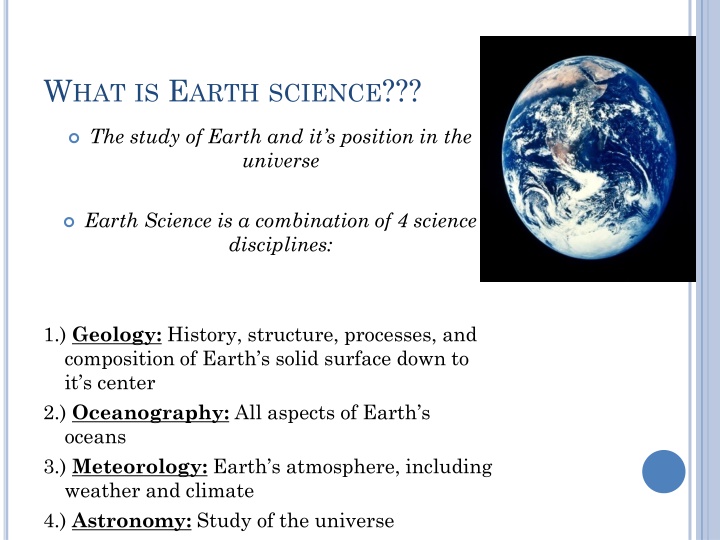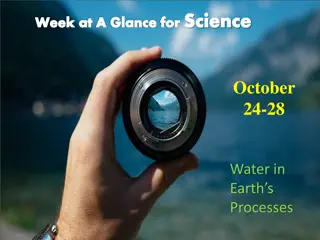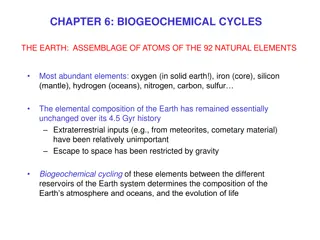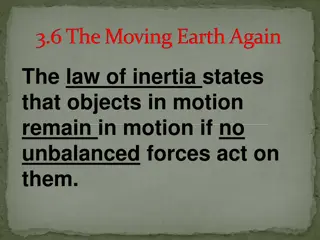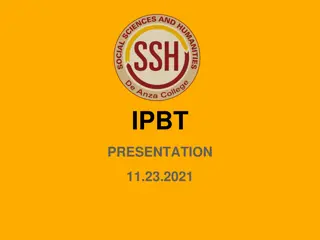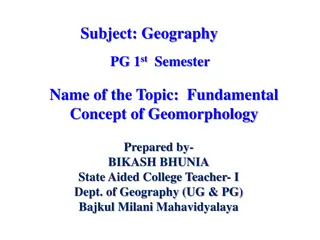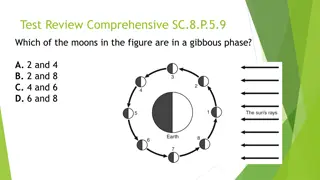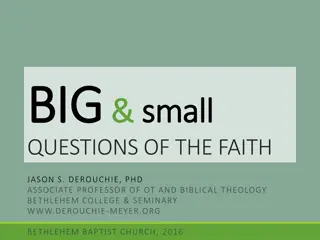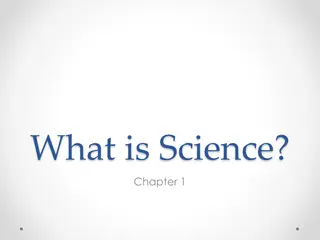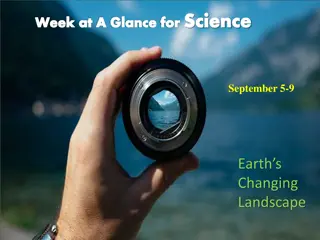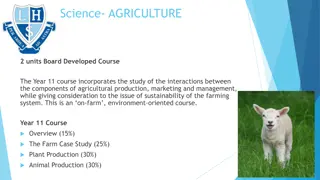Earth Science Disciplines Overview
Earth Science is a multidisciplinary field encompassing geology, oceanography, meteorology, and astronomy. This overview covers observations, inferences, metric system basics, and more in the context of scientific study.
Download Presentation

Please find below an Image/Link to download the presentation.
The content on the website is provided AS IS for your information and personal use only. It may not be sold, licensed, or shared on other websites without obtaining consent from the author.If you encounter any issues during the download, it is possible that the publisher has removed the file from their server.
You are allowed to download the files provided on this website for personal or commercial use, subject to the condition that they are used lawfully. All files are the property of their respective owners.
The content on the website is provided AS IS for your information and personal use only. It may not be sold, licensed, or shared on other websites without obtaining consent from the author.
E N D
Presentation Transcript
WHAT IS EARTH SCIENCE??? The study of Earth and it s position in the universe Earth Science is a combination of 4 science disciplines: 1.) Geology: History, structure, processes, and composition of Earth s solid surface down to it s center 2.) Oceanography: All aspects of Earth s oceans 3.) Meteorology: Earth s atmosphere, including weather and climate 4.) Astronomy: Study of the universe
SCIENCE REVIEW OBSERVATION VS. INFERENCE Observation: Information gathered using any of the five senses Quantitative Observations :Observations with numbers or quantities Qualitative Observations: Describe a physical appearance an object Measurement: Form of observation, comparing to a standard. Usually done with a tool that extends the ability of the senses. Inference: A conclusion that is made based on your observations
TRY SOME!! OBSERVATION OR INFERENCE??? Mr. Jones favorite subject is science The walls in this room are white This is a science classroom The desks are 1 meter in length It s going to rain tomorrow because of the cold front approaching I smell french fries so we must be located above the cafeteria
RATE OF CHANGE Change in value ___________________ Amount of time Example: The scientist measured the wind speed of Hurricane Dorian over a 5 day period. Day 1= 100 mph Day 2= 105 mph Day 3= 109 mph Day 4= 115 mph Day 5= 127 mph Calculate the rate of wind speed change for the 5 day period.
THE METRIC SYSTEM SYSTEM OF MEASUREMENT USED IN THE SCIENTIFIC WORLD Length: How long something is Base Unit = meter Instrument = Ruler / meter stick
Measuring Length How many millimeters are in 1 centimeter? 1 centimeter = 10 millimeters 2.8 What is the length of the line in centimeters? _______cm What is the length of the line in millimeters? _______mm 28 3 Ruler: http://www.k12math.com/math-concepts/measurement/ruler-cm.jpg
METRICSYSTEM Mass: How much matter an object has Not the same as weight!!! Weight = gravitational pull of an object You weight will change on the moon because there is less gravity on the moon. Your mass will not change on the moon. Base Units = Grams Instrument = triple-beam balance
Measuring Mass We will be using triple-beam balances to find the mass of various objects. The objects are placed on the scale and then you move the weights on the beams until you get the lines on the right-side of the scale to match up. Once you have balanced the scale, you add up the amounts on each beam to find the total mass. What would be the mass of the object measured in the picture? 70 300 373.3 3.3 _______ + ______ + _______ = ________ g Top Image: http://www.southwestscales.com/Ohaus_Triple_Beam_750-SO.jpg Bottom Image: http://www.regentsprep.org/Regents/biology/units/laboratory/graphics/triplebeambalance.jpg
METRICSYSTEM Volume: How much space an object takes up You can find the volume of liquids and solids. Base Unit = Liters Volume of Liquid : Usually measured in milliliters Instrument = Graduated Cylinder
Measuring Liquid Volume What is the volume of water in each cylinder? Images created at http://www.standards.dfes.gov.uk/primaryframework/downloads/SWF/measuring_cylinder.swf B = 37mL A = 52mL A B C C = 23mL Pay attention to the scales for each cylinder.
METRICSYSTEM Volume of Solid (regular/geometric shaped): Use formula: Length x Width x Height Units usually cm3
METRICSYSTEM Volume of Irregular Shaped Object: Use water displacement method
Measuring Solid Volume We can measure the volume of irregular object using water displacement. http://resources.edb.gov.hk/~s1sci/R_S1Science/sp/e n/syllabus/unit14/new/testingmain1.htm 260 mL Amount of H2O with object = ______ 200 mL 60 cm3 *** Still solid object!! About of H2O without object = ______ Difference = Volume = ______
Brainpop Video Scientific Notation SCIENTIFICOR EXPONENTIAL NOTATION Using the power of 10 to express numbers that would be more difficult to write or read using standard decimal numbers Used to describe distances values in space or atoms Lets try this together Mass of Earth = 5,970,000,000,000,000,000,000,000 kg What is this value in exponential notation???? 5.97 x 1024 Kilograms
PRACTICE PROBLEM Write in scientific notation. Decide the power of ten. 98,500,000 = 9.85 x 10? 64,100,000,000 = 6.41 x 10? 279,000,000 = 2.79 x 10? 4,200,000 = 4.2 x 10? 9.85 x 107 > 6.41 x 1010 1) 2) 3) 2.79 x 108 > > 4) 4.2 x 106
MORE PRACTICE PROBLEMS On these, decide where the decimal will be moved. 734,000,000 = ______ x 108 870,000,000,000 = ______x 1011 90,000,000,000 = _____ x 1010 1) 2) 3) Answers 3) 9 x 1010 1) 7.34 x 108 2)8.7 x 1011
COMPLETE PRACTICE PROBLEMS Write in scientific notation. 50,000 7,200,000 802,000,000,000 1) 2) 3) Answers 1) 5 x 104 2) 7.2 x 106 3) 8.02 x 1011
WRITEIN STANDARD FORM . 6.27 x 106 9.01 x 104 .67 x 10 -6 5.2 x 10 -8
